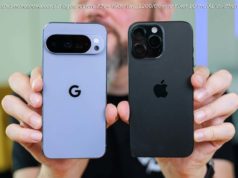Google is expanding its paid carpool service throughout California, building on an effort to get more traffic-weary drivers to share their rides to work—and to collect data that could be useful for future transportation…
The Wednesday move by Google’s Waze unit, best known for its navigation and traffic monitoring app, extends the year-old carpooling service outside its initial markets of northern California and Israel. Waze will now be pairing up drivers and passengers across a wider expanse that includes heavily congested highways in Los Angeles and other parts of southern California.
HOW IT WORKS
Waze connects drivers and riders with similar commutes based on their home and work addresses. Riders request carpool rides in advance, but aren’t guaranteed matches. Drivers can only pick up one rider; they also get to review the profiles of potential riders in advance and to select the ones they prefer. Riders can only request two rides a day.
The service is primarily focused on rush-hour commutes, when the odds of successfully matching drivers and riders are highest. Waze said tens of thousands of drivers and passengers have registered for carpooling in northern California. It won’t begin booking carpooling requests outside northern California until June 6 to give interested drivers and riders a chance to sign up for the program.
Since signing up for Waze’s carpooling service in February, Lesley Watson says she gets paid $3.50 to $5.50 every time she gives someone a ride on her morning commute from her home in Oakland to her job at an advertising agency in San Francisco. Sometimes, she also picks up a passenger on her evening commute home, although she usually drives solo on her return trip.
„It has helped me offset my commute costs for gas, tolls and parking, “ Watson, 28, says. It also has given her a chance to make new friends among the five or six people she regularly picks up through the Waze app.
WAZE VS. UBER
Although the expansion could pose a threat to Uber and Lyft, most people who use ride-hailing services don’t rely on them to get to work, according to survey data. Instead, most people use Uber and Lyft for recreational or social reasons, particularly between 10 p.m. and 4 a.m. when public transit shuts down in many places.
That’s according to a survey of 4,500 people conducted last year by the Shared-Use Mobility Center, a group that focuses on public transit and ways to reduce the number of cars on the road. Only 21 percent of the respondents summoned a raid-hailing service to commute to work, and then did so sporadically, the study found.
Cost could easily be a factor. For instance, commuting to downtown San Francisco from the suburb of Lafayette via Uber could cost between $30 and $40 each way using the service’s own carpool option, according to Uber’s fare estimator. On Waze, that 22-mile (35-kilometer) ride would cost no more than $12.42.
WHAT GOOGLE GETS
Unlike ride-hailing services, Waze’s carpooling service isn’t designed to provide drivers with a major source of income. It tries to calculate a price that’s most likely to encourage two people to carpool instead of driving separately. At most, drivers are paid 54 cents per mile—the rate that Internal Revenue Service allows to account for gasoline, insurance and maintenance for a vehicle used on business.
„We want the ride to be affordable enough for riders so they use it frequently and we want drivers to be rewarded for taking a detour to fill an extra seat, “ said Josh Fried, head of business development for the carpooling service.
The service also doesn’t make much money for Google, which derives most of its income from digital advertising. But the company will be amassing data on commuters and their travel habits. That could be useful to Google for a variety of purposes, including targeted advertising and planning potential future transport services, including any involving the self-driving cars one of its spinoffs, Waymo, is currently testing.
CARPOOLING AS BUSINESS
While carpooling has been around for decades, it’s never been particularly popular. „People don’t want to get tied to something that requires them to ride with the same people and be in a certain place at a certain time, “ said Sharon Feigon, executive director for the Shared-Use Mobility Center.
Using technology to match drivers and passengers on days they want to participate in a carpool offers more flexibility that may get more people to try it out, and discover they like it, Feigon said.
But it’s not an easy business. Lyft ended its carpool service nine months ago, citing a shortage of drivers willing to meet the demand. It’s currently experimenting with another commute-hour option called Shuttle that makes designated stops on routes in two test markets—San Francisco and Chicago.
The expansion makes it more likely that Waze will offer carpooling in other urban regions, although Fried declined to comment on that possibility. So far, the only other market that Waze has confirmed is Brazil, where the carpooling service will begin operating later this year.
Explore further: Google to expand Waze carpooling service in San Francisco






